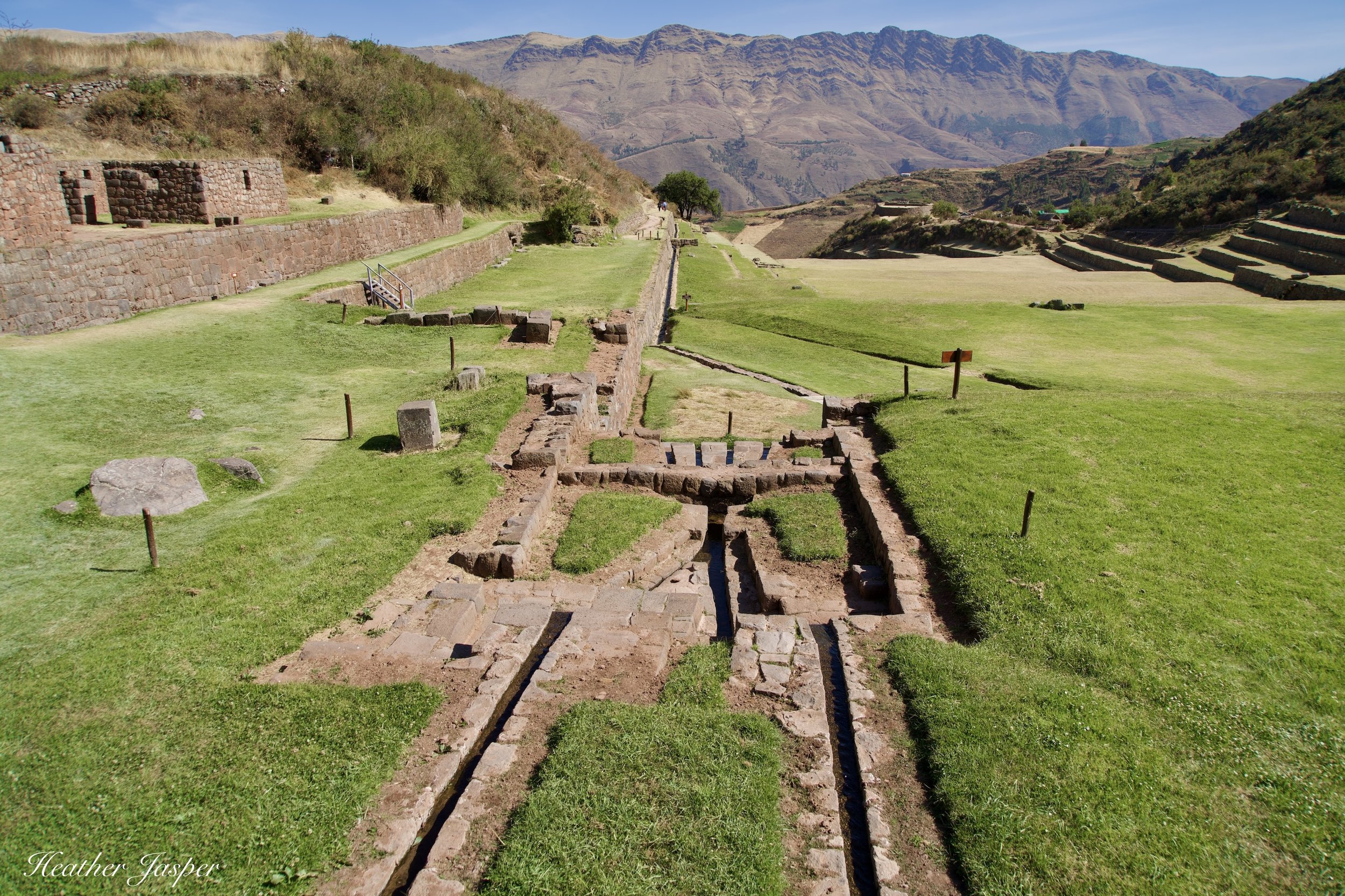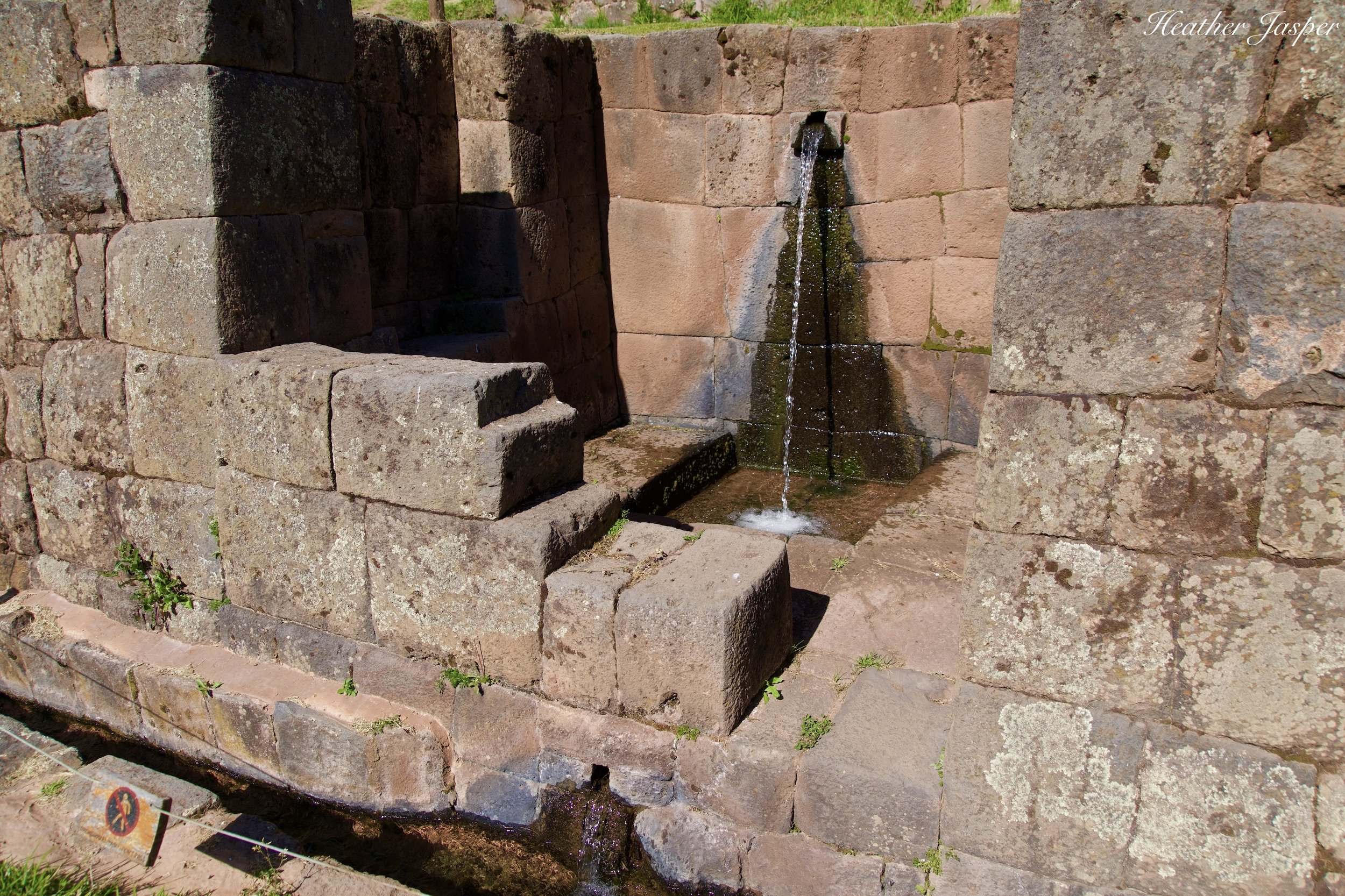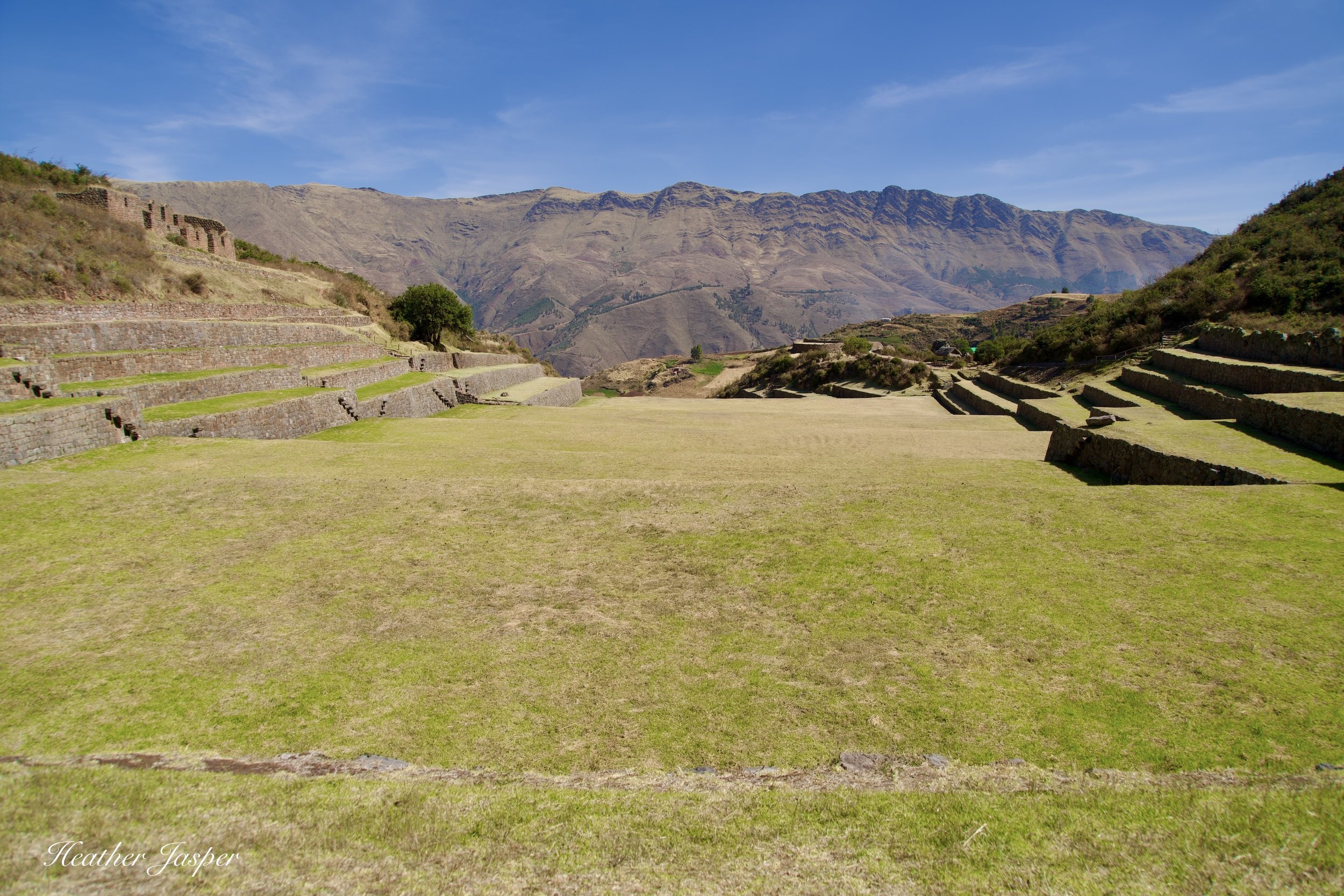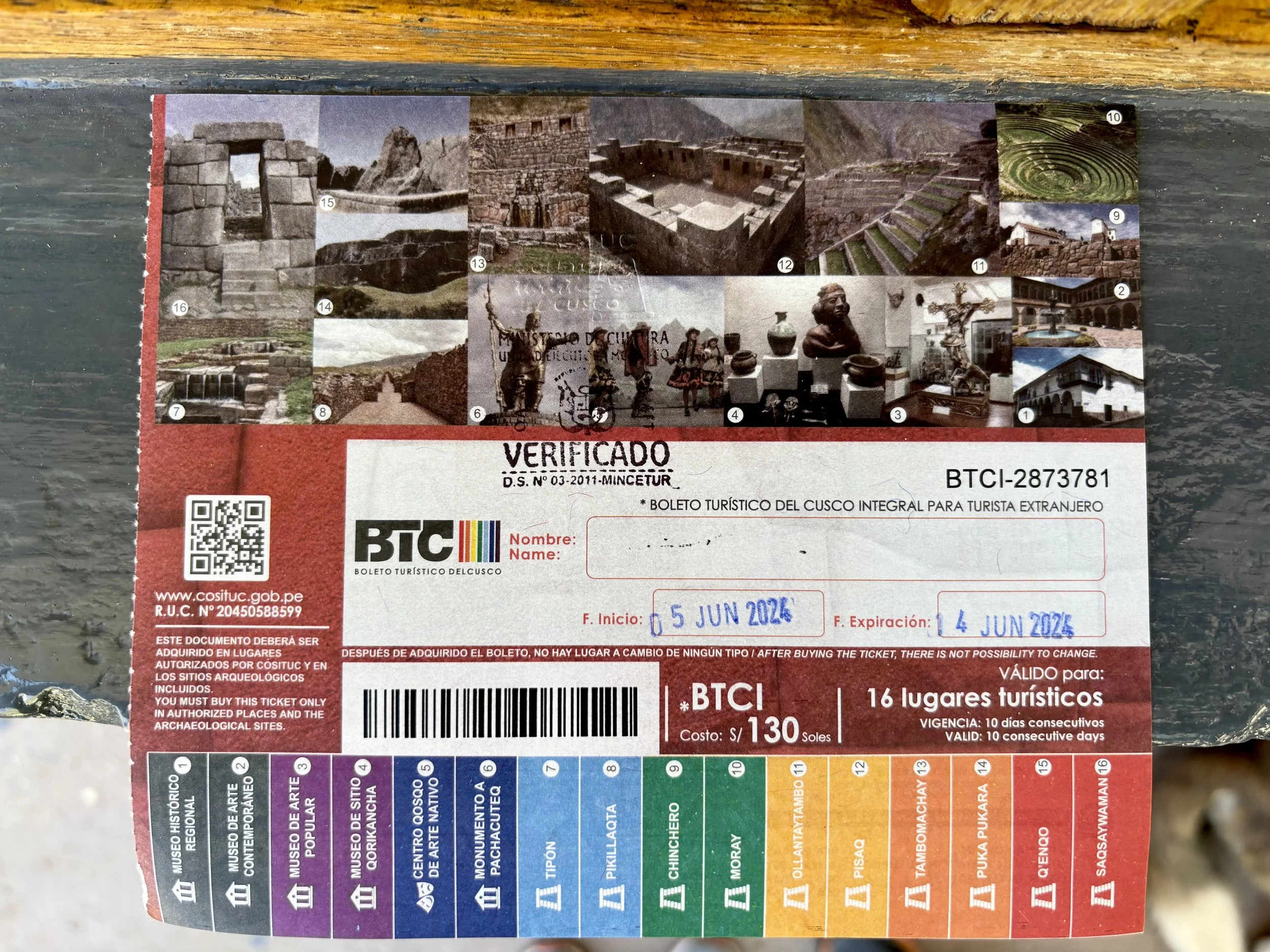Tipon Inca Ruins
These complex channels are one of the many water features that create dozens of fountains at Tipón.
The Tipón Inca ruins are a complete Inca city centered around a water temple.
The Inca channeled the natural springs at Tipón into a series of fountains that echo around a set of spectacular terraces that face south.
No matter where you are in the ruins, you can hear water rushing through stone channels and bubbling over small waterfalls. It’s absolutely my favorite thing about Tipón.
All Inca cities and temples were designed with important water features, but Tipón is one of the few to be classified as a wonder of civil engineering by the American Society of Civil Engineers. The entire system is still in perfect condition and all the fountains still flow year-round, even during droughts.
Tipón’s fountains
The fountains that have been flowing for hundreds of years and the surround sound effect of falling water are the most striking things about Tipón.
Inca showers
All Inca temples have fountains designed for ritual cleansing and ablutions, like this small chamber on the side of the main temple area.
Tipón or Timpuj?
The original name is likely lost, though archeologists theorize that the modern name could be a Hispanization of the Quechua word timpuj (team-pooh), which means “boiling water” and could reference the bubbling fountains that can be heard throughout the ruins.
Archeologists believe that Tipón was the main palace of the Inca Yahuar Huaca, father of the Inca Wiracocha, who lived1277-1298, according to calculations from Spanish chroniclers. (The Inca is the title of the ruler who reigned over most of South America until the Spanish invasion in the 1530s).
Where today you’ll see terraces covered with grass, there used to be gardens. Today the magnificent houses are missing their roofs and decorations. The ones with perfectly carved stones were probably left bare but the walls that were more rustic were usually covered with designs carved into a layer of clay.
Many of the terrace walls are partially built with bedrock, the surrounding stones carved to fit perfectly with the bedrock.
How to get there?
Tipón is 23km south of Cusco but close enough that several city busses go to the nearby town of Tipón. Any bus that says Oropesa goes through Tipón. The ruins are another 3.7km from the town and there are always taxis by where the bus stops that will take you up to the ruins. Be sure to negotiate a pick up in 2 hours, or pay the taxi driver to wait. The ruins are in a narrow side canyon, and you can’t get cell service there to call for a taxi.
Sometimes you can get a guide on arrival, but not always so either read up before your go or hire a guide in Cusco. The advantage of hiring a guide in Cusco is that they will provide transportation.
You can combine Tipón with a morning birdwatching at the nearby Huacarpay wetlands. Checkout my 7-day Cusco & Sacred Valley itinerary for my recommendations on doing Huacarpay and Tipón in a day.
Buy the Boleto Turistico
If you don’t already have the Boleto Turístico del Cusco, you can buy it at Tipón but they only accept cash and it costs s/130 soles. There is no separate ticket for only Tipón.















